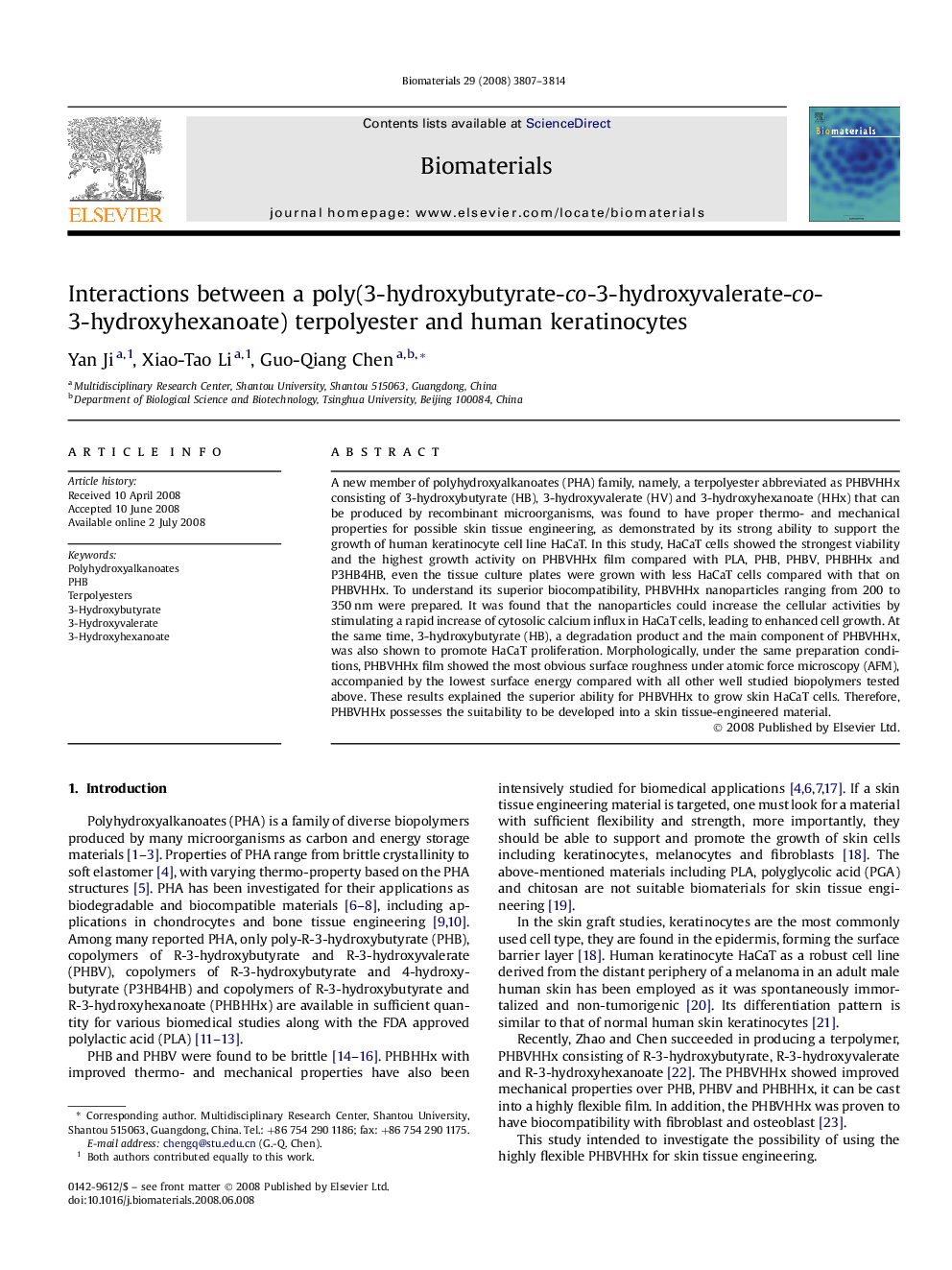| کد مقاله | کد نشریه | سال انتشار | مقاله انگلیسی | نسخه تمام متن |
|---|---|---|---|---|
| 9877 | 651 | 2008 | 8 صفحه PDF | دانلود رایگان |

A new member of polyhydroxyalkanoates (PHA) family, namely, a terpolyester abbreviated as PHBVHHx consisting of 3-hydroxybutyrate (HB), 3-hydroxyvalerate (HV) and 3-hydroxyhexanoate (HHx) that can be produced by recombinant microorganisms, was found to have proper thermo- and mechanical properties for possible skin tissue engineering, as demonstrated by its strong ability to support the growth of human keratinocyte cell line HaCaT. In this study, HaCaT cells showed the strongest viability and the highest growth activity on PHBVHHx film compared with PLA, PHB, PHBV, PHBHHx and P3HB4HB, even the tissue culture plates were grown with less HaCaT cells compared with that on PHBVHHx. To understand its superior biocompatibility, PHBVHHx nanoparticles ranging from 200 to 350 nm were prepared. It was found that the nanoparticles could increase the cellular activities by stimulating a rapid increase of cytosolic calcium influx in HaCaT cells, leading to enhanced cell growth. At the same time, 3-hydroxybutyrate (HB), a degradation product and the main component of PHBVHHx, was also shown to promote HaCaT proliferation. Morphologically, under the same preparation conditions, PHBVHHx film showed the most obvious surface roughness under atomic force microscopy (AFM), accompanied by the lowest surface energy compared with all other well studied biopolymers tested above. These results explained the superior ability for PHBVHHx to grow skin HaCaT cells. Therefore, PHBVHHx possesses the suitability to be developed into a skin tissue-engineered material.
Journal: Biomaterials - Volume 29, Issue 28, October 2008, Pages 3807–3814